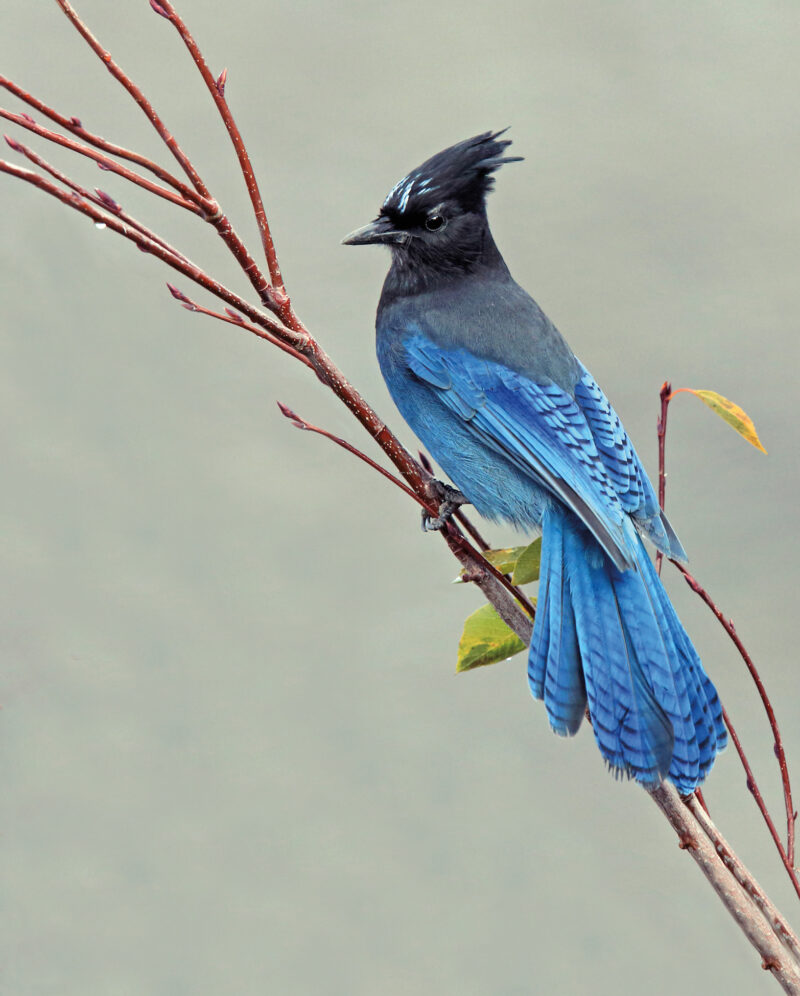1098 ABC to birds of BC
Birds of British Columbia and the Pacific Northwest: A Complete Guide, Second Edition
by Richard Cannings, Tom Aversa, and Hal Opperman
Victoria: Heritage House, 2020 (first published 2018)
$29.95 / 9781772033274
Reviewed by Trevor Carolan
*
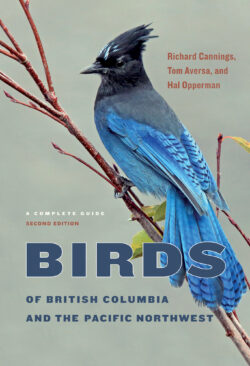 April is upon us and spring birding season is in full readiness position. The next two months promise a bonanza of colourful, welcome sightings as favourite migrant species return to nest along our B.C. share of the Pacific Flyway. Adding to the familiar action will likely be the added possibility of new and unusual visitors arriving, drawn by pandemic conditions in local ecologies that have seen a dramatic uptick in wildlife encounters as restricted human access to many popular outdoor destinations draws wildlife back in. For newcomers who have been called to wildlife viewing in response to COVID-imposed limitations on many other routine activities, a good guidebook is indispensable. Whether you’re viewing starry constellations, furry critters, trees and plant life, or birds, there’s no replacing an authoritative guidebook. Having iPhone data is useful, but when identification of species gets serious, birders know it’s a little like taking a bath with your socks on.
April is upon us and spring birding season is in full readiness position. The next two months promise a bonanza of colourful, welcome sightings as favourite migrant species return to nest along our B.C. share of the Pacific Flyway. Adding to the familiar action will likely be the added possibility of new and unusual visitors arriving, drawn by pandemic conditions in local ecologies that have seen a dramatic uptick in wildlife encounters as restricted human access to many popular outdoor destinations draws wildlife back in. For newcomers who have been called to wildlife viewing in response to COVID-imposed limitations on many other routine activities, a good guidebook is indispensable. Whether you’re viewing starry constellations, furry critters, trees and plant life, or birds, there’s no replacing an authoritative guidebook. Having iPhone data is useful, but when identification of species gets serious, birders know it’s a little like taking a bath with your socks on.
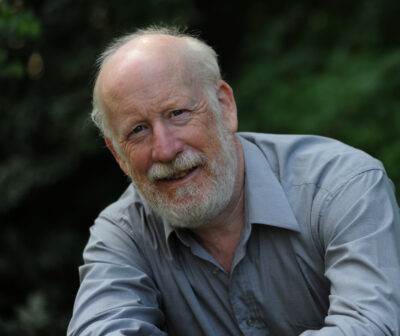
For a lot of committed birders the classic Golden Field Guide Birds of North America has served faithfully in identifying birds. Light and compact, it’s a delightful little guide and it really covers the terrain. Advancing birdwatchers typically move on to the National Audubon Society Field Guide to North American Birds. It’s heavier, more solid and is packed with excellent photographs versus the colour illustrations in the Golden Guide. In between are a bevy of other useful guides, often to narrower local areas—the Interior, Burrard Inlet, what have you. With the outstanding new second edition of Birds of British Columbia and the Pacific Northwest, we get the best of all the above. This is a terrific handbook active birders will appreciate having.
The book’s authors are top-drawer naturalists. Aversa and Opperman are Americans. Their side of the border they know their stuff. Cannings though, is a name you might recognize. Currently the sitting M.P (NDP) for South Okanagan-West Kootenay, for 17 years he curated the Cowan Vertebrate Museum at the University of British Columbia. A founding member of the Okanagan-Similkameen Conservation Alliance, he has written more than a dozen books on BC’s natural history. What’s not to like about a sitting national parliamentarian possessed of such ecological expertise?


To get a better sense of the new book’s utility, my wife and I give it test-drives—to the drier Fraser Valley ecology of Clayburn, the marine cliffs at Whytecliff Park on Howe Sound, marshy Pitt Polder Eco-Reserve in Pitt Meadows, and the urban sanctuary pond at Hastings Park on the PNE grounds. In each case it proved it proved its mettle: any good guidebook should offer a concise description (i.e., “Ruby-crowned Kinglet – Male: Red crown, only exposed in excitement”), and the general range of each species. This new second edition offers both, as well as helpful notes pointing out similar species, good references to preferred habitat associations, behaviour & feeding, and vocalizations.
The narrative information is consistently solid and authoritative—when four independent birders in two groups sighted a rare Broad-tailed Hummingbird at Clayburn that with its iridescent courtship throat gorget was unmistakable and backed it up with photos, of four different guidebooks only the new Birds was able to note it as an “accidental’ visitor to southern BC. That kind of clear information is helpful. What often cinches the deal is the outstanding colour photograph images of each species. They are of exemplary quality.

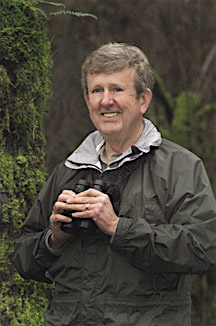
That said, this new book is so well-organized that it can occasionally throw a curveball. To those used to thumbing through the usual guidebook section featuring hawks and falcons, for an identification of let’s say, a Kestrel or Merlin—both with entrancing plumage—the new Birds might be a quick puzzle. Instead, this guide is sufficiently comprehensive that Falcons and Caracaras receive their own five-page spread, situated between woodpeckers and Flycatchers—not your usual pecking order. However, that’s what the Index at back is for and you’ll have no trouble in tracking to your desired species write-up.
What regional birders will especially appreciate is the exceptionally well researched introductory essay “The Pacific Northwest Bioregion: Geography, Climate, Ecology.” At literary and academic conferences discussing “the Pacific Northwest” can be like waving a flag at a bull. Those committed to natural science and the outdoors tend more to practicalities than theory, so facts and useful information feature here and these fifteen pages are jam-packed with precisely the kind of lore you want if you find pleasure in viewing birds. Dividing the whole B.C. and Pacific Northwest region into three eco-regions (Marine West Coast Forest, Forested Western Cordillera, North American Cold Deserts), each of these in then sub-divided into further 4-6 subsections. Getting out of the crowded lower mainland or Victoria region and on to camping and birding territory of the Forested Western Cordillera Ecoregion, for example, will bring you to a quick geographic sketch—“Characterized by high mountains and vast forested plateaus. Lodgepole pine, Engelmann spruce, and subalpine fir are the prevalent conifer forest components.” In the first of its five sub-regions, the “Sub-Boreal Interior” area—think of Prince George and northward—will be detailed with its “stands of paper birch and quaking aspen…[and] an abundance of wetland types, including sphagnum bogs.” Regular campers and birders will have no difficulty mentally visualizing this picture.
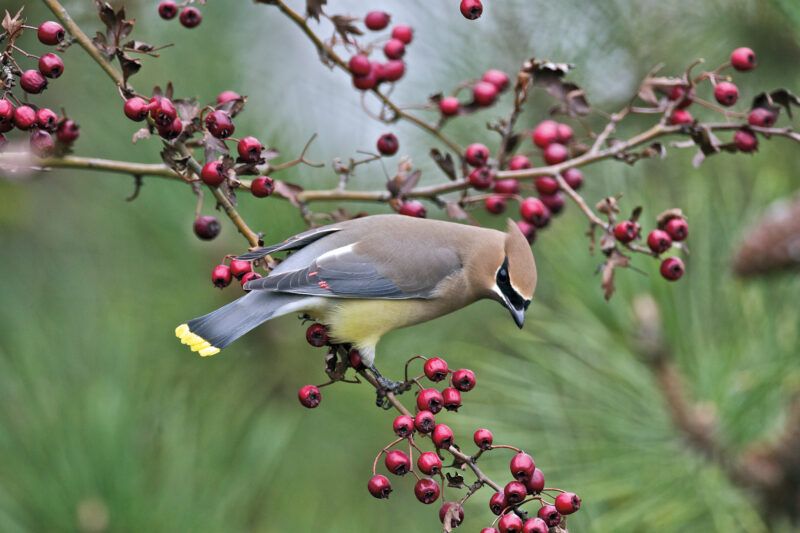

What birds will you likely encounter there? Try this: “the sub-boreal interior is the Pacific Northwest’s centre of abundance for breeding Northern Waterthrush and American Redstart. Yellow-bellied Sapsucker, Yellow-bellied Flycatcher, Magnolia Warbler, and White-throated Sparrow breed here; Ovenbird and other “eastern” songbirds are increasing.” If you’re an urban area resident, this will incite your attention. If you’re the kind of birder who enjoys keeping a log of bird sightings, my guess is that you’re going to start finding a reason to include a visit to this area when non-essential travel restrictions are lifted. And it just gets better: from there you can wind your route in any direction to cover birding conditions in Williams Lake, Kamloops, the Okanagan, the Kootenays, Vancouver Island, wherever: these editors have it taped and they’ve logged the species you’re probably going to encounter in such regions. This bioregional birding essay is as good as it gets and you can bet will spark a modest, steady increase in recreational travel to some of B.C.’s, and U.S. best bird-viewing habitats.
With its range maps, glossary of terms that will be useful to newer birders, and glossy stock and binding that will take some bumping about in a daypack, this is the guide you’re going to want if you love birds and identifying them in our province and adjacent US regions. You’ll keep it handy for those surprise appearances that just can’t go unchecked—“what kind of singer is that on the telephone line?” Already it has become the go-to guide for your agent here.
Birds Of British Columbia and The Pacific Northwest, a complete guide, Second Edition, is published by Heritage House. Highly recommended.

*

Professor Emeritus with the University of the Fraser Valley’s School of Land Use and Environmental Change, Trevor Carolan is a longtime member of BC’s Wild Bird Trust. Editor’s note: Trevor Carolan has previously reviewed books by Jonathan Manthorpe, Michael Schauch, John Lent, Francis Mansbridge, and Daniel Francis for The Ormsby Review.
*
The Ormsby Review. More Books. More Reviews. More Often.
Publisher and Editor: Richard Mackie
The Ormsby Review is a journal service for in-depth coverage of B.C. books and authors. The Advisory Board consists of Jean Barman, Wade Davis, Robin Fisher, Cole Harris, Hugh Johnston, Patricia Roy, David Stouck, Maria Tippett, and Graeme Wynn. Scholarly Patron: SFU Graduate Liberal Studies. Honorary Patron: Yosef Wosk. Provincial Government Patron since September 2018: Creative BC
“Only connect.” – E.M. Forster
